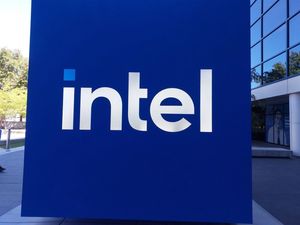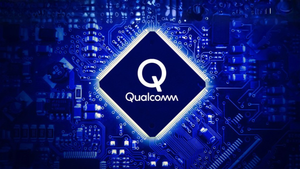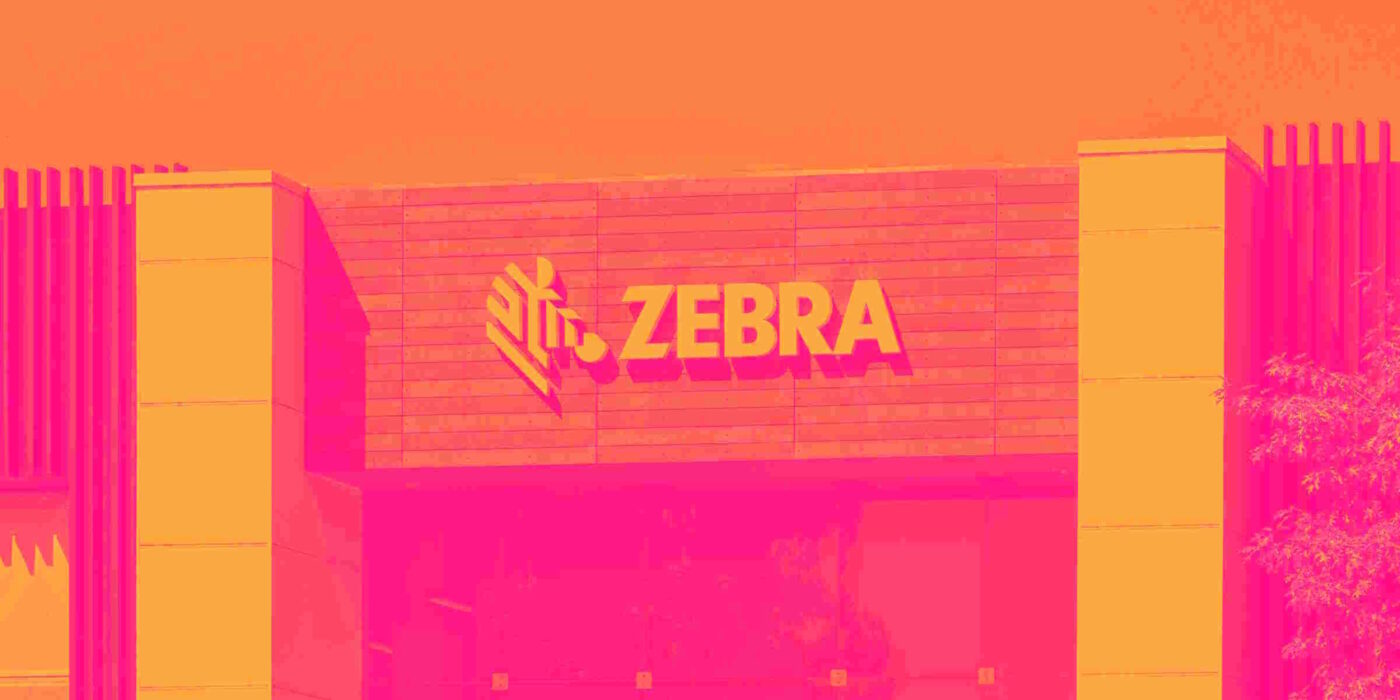
Enterprise data capture company Zebra Technologies (NASDAQ: ZBRA) met Wall Street’s revenue expectations in Q3 CY2025, with sales up 5.2% year on year to $1.32 billion. The company expects next quarter’s revenue to be around $1.46 billion, coming in 2.4% above analysts’ estimates. Its non-GAAP profit of $3.88 per share was 3.4% above analysts’ consensus estimates.
Is now the time to buy Zebra? Find out by accessing our full research report, it’s free for active Edge members.
Zebra (ZBRA) Q3 CY2025 Highlights:
- Revenue: $1.32 billion vs analyst estimates of $1.32 billion (5.2% year-on-year growth, in line)
- Adjusted EPS: $3.88 vs analyst estimates of $3.75 (3.4% beat)
- Adjusted EBITDA: $285 million vs analyst estimates of $275 million (21.6% margin, 3.7% beat)
- Revenue Guidance for Q4 CY2025 is $1.46 billion at the midpoint, above analyst estimates of $1.43 billion
- Adjusted EPS guidance for Q4 CY2025 is $4.30 at the midpoint, above analyst estimates of $4.26
- Operating Margin: 13.9%, down from 15.2% in the same quarter last year
- Free Cash Flow Margin: 16.4%, down from 22.1% in the same quarter last year
- Organic Revenue rose 4.8% year on year vs analyst estimates of 4.5% growth (28.3 basis point beat)
- Market Capitalization: $15.79 billion
“Our strong third quarter results were driven by solid demand, lower-than-expected tariffs, operating expense leverage and continued excellent execution by our teams,” said Bill Burns, Chief Executive Officer of Zebra Technologies.
Company Overview
Taking its name from the black and white stripes of barcodes, Zebra Technologies (NASDAQ: ZBRA) provides barcode scanners, mobile computers, RFID systems, and other data capture technologies that help businesses track assets and optimize operations.
Revenue Growth
A company’s long-term sales performance is one signal of its overall quality. Even a bad business can shine for one or two quarters, but a top-tier one grows for years.
With $5.26 billion in revenue over the past 12 months, Zebra is one of the larger companies in the business services industry and benefits from a well-known brand that influences purchasing decisions. However, its scale is a double-edged sword because finding new avenues for growth becomes difficult when you already have a substantial market presence. To accelerate sales, Zebra likely needs to optimize its pricing or lean into new offerings and international expansion.
As you can see below, Zebra’s sales grew at a tepid 3.9% compounded annual growth rate over the last five years. This shows it failed to generate demand in any major way and is a rough starting point for our analysis.
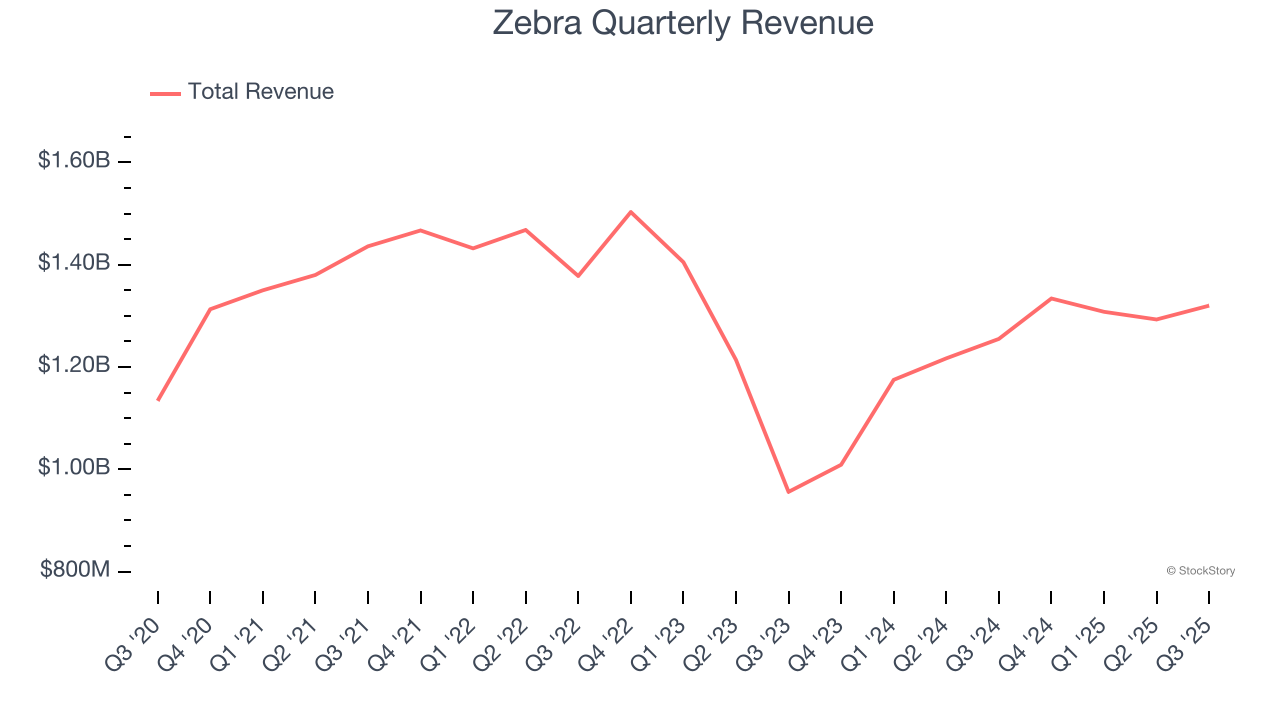
We at StockStory place the most emphasis on long-term growth, but within business services, a half-decade historical view may miss recent innovations or disruptive industry trends. Zebra’s recent performance shows its demand has slowed as its annualized revenue growth of 1.7% over the last two years was below its five-year trend. 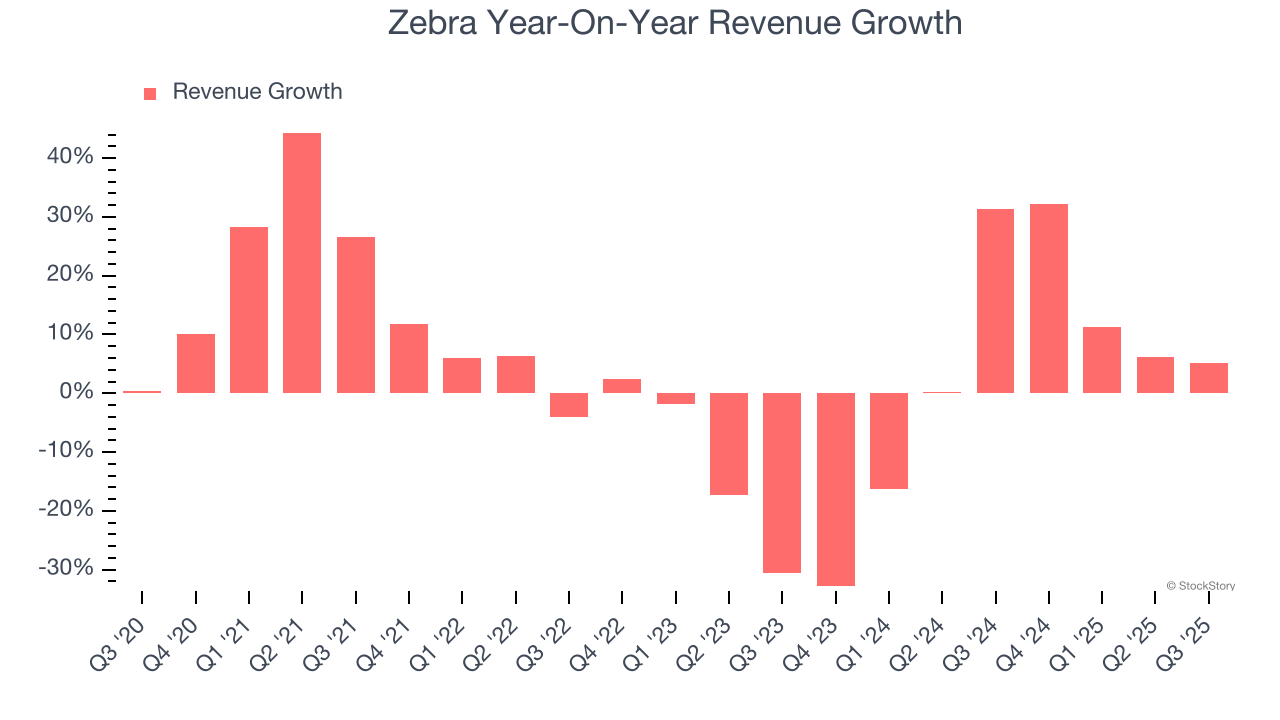
We can dig further into the company’s sales dynamics by analyzing its organic revenue, which strips out one-time events like acquisitions and currency fluctuations that don’t accurately reflect its fundamentals. Over the last two years, Zebra’s organic revenue averaged 4.4% year-on-year growth. Because this number is better than its two-year revenue growth, we can see that some mixture of divestitures and foreign exchange rates dampened its headline results. 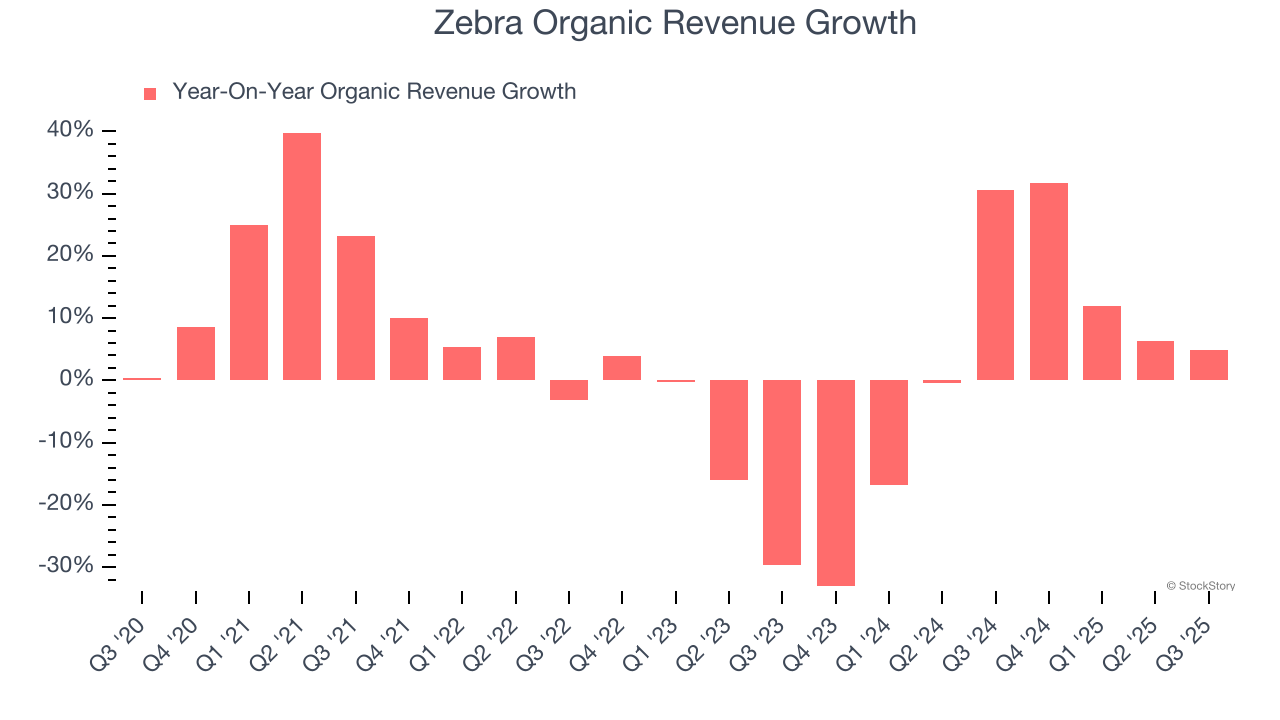
This quarter, Zebra grew its revenue by 5.2% year on year, and its $1.32 billion of revenue was in line with Wall Street’s estimates. Company management is currently guiding for a 9.5% year-on-year increase in sales next quarter.
Looking further ahead, sell-side analysts expect revenue to grow 10% over the next 12 months, an improvement versus the last two years. This projection is noteworthy and implies its newer products and services will spur better top-line performance.
Unless you’ve been living under a rock, it should be obvious by now that generative AI is going to have a huge impact on how large corporations do business. While Nvidia and AMD are trading close to all-time highs, we prefer a lesser-known (but still profitable) stock benefiting from the rise of AI. Click here to access our free report one of our favorites growth stories.
Operating Margin
Operating margin is one of the best measures of profitability because it tells us how much money a company takes home after subtracting all core expenses, like marketing and R&D.
Zebra has managed its cost base well over the last five years. It demonstrated solid profitability for a business services business, producing an average operating margin of 13.4%.
Analyzing the trend in its profitability, Zebra’s operating margin decreased by 3.1 percentage points over the last five years. This raises questions about the company’s expense base because its revenue growth should have given it leverage on its fixed costs, resulting in better economies of scale and profitability.
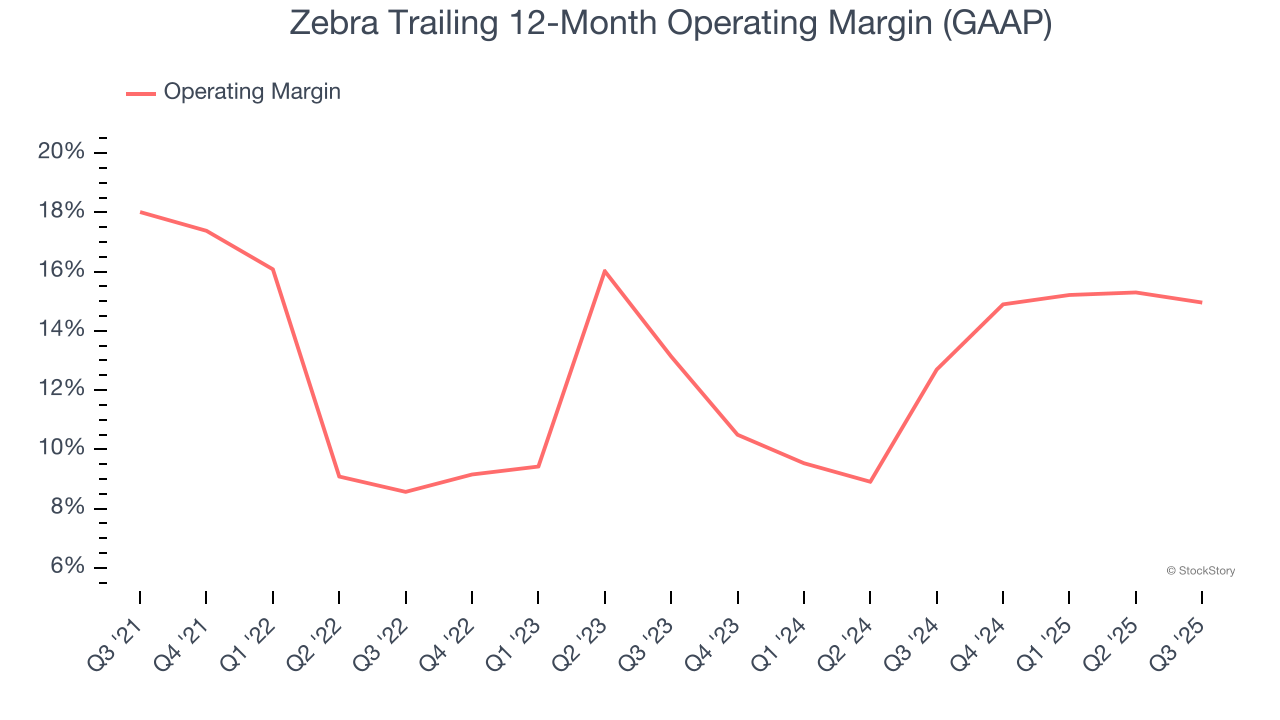
This quarter, Zebra generated an operating margin profit margin of 13.9%, down 1.4 percentage points year on year. This reduction is quite minuscule and indicates the company’s overall cost structure has been relatively stable.
Earnings Per Share
Revenue trends explain a company’s historical growth, but the long-term change in earnings per share (EPS) points to the profitability of that growth – for example, a company could inflate its sales through excessive spending on advertising and promotions.
Zebra’s unimpressive 5.4% annual EPS growth over the last five years aligns with its revenue performance. This tells us it maintained its per-share profitability as it expanded.
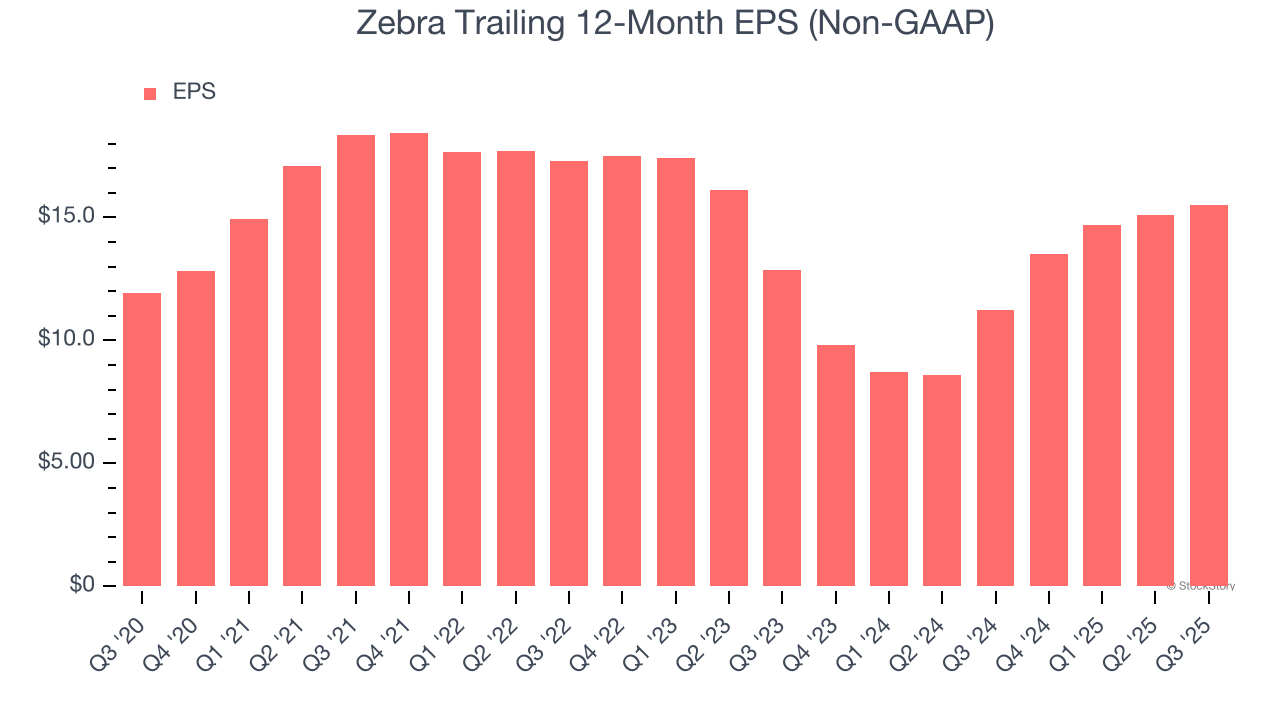
Like with revenue, we analyze EPS over a shorter period to see if we are missing a change in the business.
Although it wasn’t great, Zebra’s two-year annual EPS growth of 9.9% topped its 1.7% two-year revenue growth.
Diving into the nuances of Zebra’s earnings can give us a better understanding of its performance. While we mentioned earlier that Zebra’s operating margin declined this quarter, a two-year view shows its margin has expanded. This was the most relevant factor (aside from the revenue impact) behind its higher earnings; interest expenses and taxes can also affect EPS but don’t tell us as much about a company’s fundamentals.
In Q3, Zebra reported adjusted EPS of $3.88, up from $3.49 in the same quarter last year. This print beat analysts’ estimates by 3.4%. Over the next 12 months, Wall Street expects Zebra’s full-year EPS of $15.51 to grow 8.1%.
Key Takeaways from Zebra’s Q3 Results
It was great to see Zebra’s revenue guidance for next quarter top analysts’ expectations. We were also glad its EPS outperformed Wall Street’s estimates. Overall, we think this was still a solid quarter with some key areas of upside. The stock traded up 2.2% to $316.99 immediately following the results.
Zebra may have had a good quarter, but does that mean you should invest right now? We think that the latest quarter is only one piece of the longer-term business quality puzzle. Quality, when combined with valuation, can help determine if the stock is a buy. We cover that in our actionable full research report which you can read here, it’s free for active Edge members.

